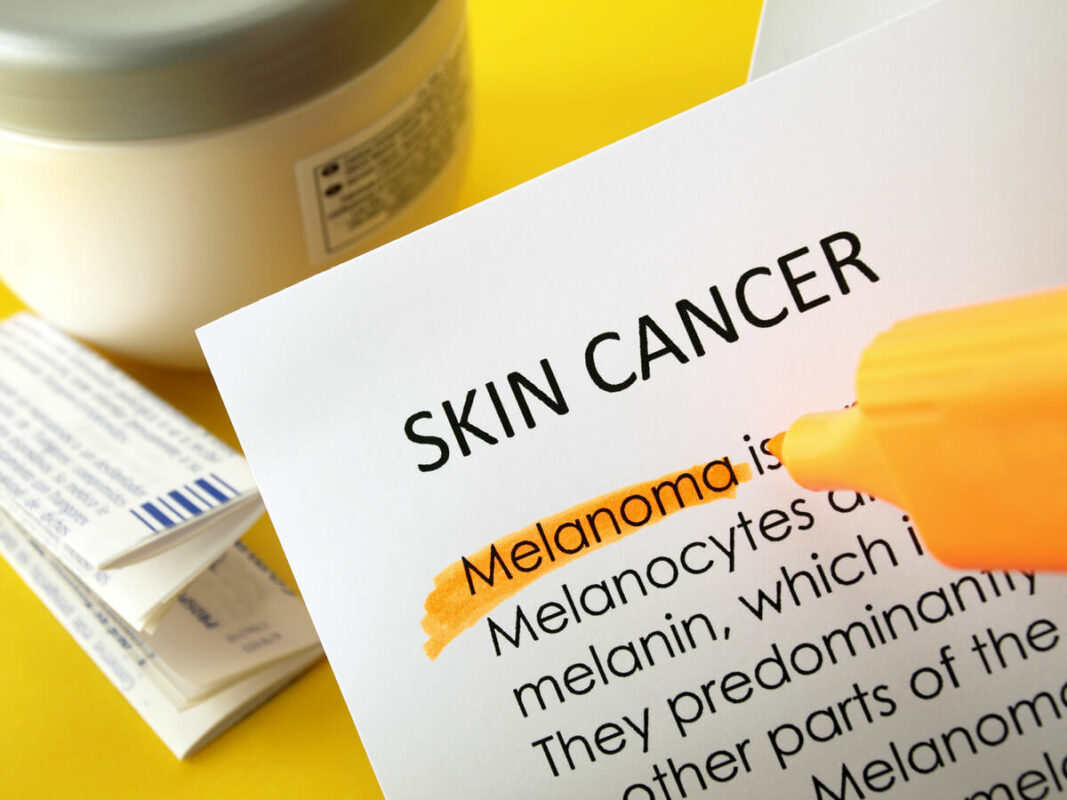The beauty ideal of sun-tanned skin often comes at a high price as more and more people have skin cancer. According to the Skin Cancer Foundation, it is the most common cancer in the US¹. What are the main types, characteristics and risk factors? How can you protect yourself? What is the MOHS procedure and when is it applied?
One in five Americans will be diagnosed with skin cancer by the age of 70. Skin cancer is the out-of-control growth of skin cells. The UV light of the sun is considered to be the main cause, as it damages the DNA. However, the cells do not die, but degenerate and begin to proliferate.
Skin Cancer can develop within a short time
There are three main types of skin cancer. A basal cell carcinoma is the most frequently occurring form of all cancers. Every year in the US, an estimated 3.6 million cases are diagnosed. It arises from abnormal, uncontrolled growth of basal cells. Often it shows small veins on a shiny skin surface and tends to grow slowly.
Squamous cell carcinoma of the skin is the second most common form of skin cancer. It can appear as scaly red patches, open sores, rough, thickened or wart-like skin, or raised growths with a central depression.
A melanoma emerges when the so-called melanocytes, the pigment cells of the skin, degenerate. It is a markedly malignant tumor.
Skin cancer can develop within a short time. The dangerous aspect about all types: They are mostly not painful and are therefore often misjudged as harmless.
Sun protection and early detection make a difference
How can you protect yourself from skin cancer? Most important: Beware of the sun. Basically, everyone should protect themselves from the harmful effects of sunlight. However, those who are particularly sensitive to UV light are best to avoid the sun as much as possible. When being exposed to the sun, always remember to use the right protection like sunscreen, suitable clothing, sunglasses, and head gear. You should always avoid the midday sun and never use UV tanning beds.
Bear in mind that sunburns in childhood can damage the cells at an early age and develop into skin cancer later in life. Therefore, it is especially important to keep newborns out of the sun and use high sunscreen on babies over the age of 6 months.
As with all forms of cancer, the success of the cure always depends on how early the cancer is detected. It is recommended to see a dermatologist once a year for a professional skin exam and to do regular self-checks in-between.
When surgery is indispensable
In particular, the basal cell carcinoma can form spurs and branches in the skin which are not visible to the surgeon. They have to be removed completely to make sure there are no surrounding cells affected, so that the cancer can’t spread any further.
If a tumor is removed and the wound is closed afterwards, it may happen that according to the histological report tumor extensions were still found. As a result, the entire wound must be reopened for complete removal of the tumor. With this procedure, wound infections and uneven or excessive scarring are likely. This should be avoided, especially in the face.
Mohs surgery as the method of choice
In order to prevent for the scenario described above, Mohs (Micrographic Histologically Controlled Surgery) is currently the treatment of choice. When applying this method, it is possible to completely remove skin tumors with maximum safety. At the same time, it ensures an optimal final aesthetic result for the patient with the smallest possible tissue defect.
With Mohs surgery, the tumor is removed in stages. Each layer is mapped and tested to detect any remaining tumor cells immediately before proceeding to the next. This is a precise, complex, and time-consuming cancer removal procedure. Mohs procedures have the highest cure rate of all therapies. It is especially effective for high-risk basal cell carcinomas, such as large tumors, tumors that have recurred after other treatments, and tumors in areas such as the face, as much normal skin as possible should be preserved.
Regenerative Therapy may accelerate wound healing after surgery
In some cases, removing the cancer leaves behind a wound that is too big to close with simple sutures and reconstructive surgery is indicated, with e.g., skin grafts and flaps. Fast wound closure is important to avoid wound infections and excessive scaring.
Regenerative Therapy amplifies the repair and reconstruction of injured skin and tissue by
- Providing building blocks for scaffolds to support reconstruction.
- Retaining moisture needed for healing.
- Creating a barrier to protect the regenerative process.
- Stimulating the repair of damaged and injured tissues.
Due to these properties, Regenerative Therapy may accelerate and promote wound healing for patients who have undergone a surgery to remove skin cancer. Find out more about its characteristics and effects here.
1: https://www.skincancer.org/skin-cancer-information/skin-cancer-facts/

